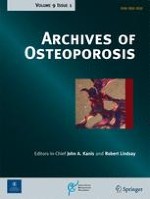Osteoporosis and cognitive impairment interwoven warning signs: community-based study on older adults-Bushehr Elderly Health (BEH) Program
Authors
Affiliations
Abstract
Cognitive impairment and osteoporosis are frequently seen to coincide in clinical practice. Osteoporosis was higher in elderly populations with cognitive impairment, especially in postmenopausal women. Thus, prophylaxis for osteoporosis, falls, and fractures should be considered as part of the treatment of patients with cognitive impairment.
Introduction: Cognitive impairment and osteoporosis are two important health concerns among older adults that their possible relationship, concurrent occurrence, and linking mechanism have recently been highlighted. The purpose of this study was to assess the sex-independent association of these two conditions.
Materials and methods: From among 2331 individuals aged ≥ 60 years selected in Bushehr Elderly Health (BEH) Program, Iran; data of 1508 participants were analyzed. Cognitive status was assessed using Category Fluency Test and Mini-cog assessment instrument. Association between osteopenia-osteoporosis and cognitive impairment were assessed using uni- and multivariable logistic regression models.
Results: Osteoporosis was diagnosed in 598 (39.6%) of the participants (58.3% female and 21.9% male, P < 0.001). From among them, 677 (44.9%) had evidence of cognitive impairment (64.5% female and 31.0% male, P < 0.001). Multivariate logistic regressions showed spinal and total hip osteoporosis was associated with 1.83 (CI 95% 1.13-2.96) and 2.24-fold (CI 95% 1.28-3.89) increase in the risk of cognitive impairment among female subjects, respectively. Ordinal logistic regression, on the other hand, revealed cognitive impairment to be associated with 1.42-fold (CI 95% 1.04-1.92) increase in the risk of spinal osteopenia-osteoporosis, 1.5-fold increase in total hip osteoporosis (CI 95% 1.09-2.05), and 1.48-fold increase in general osteoporosis (CI 95% 1.06-2.0).
Conclusion: Different degrees of bone loss and cognitive impairment may be a risk factor for each other among women but not in men. It is suggested that the screening, adopting preventive measures for the other condition and regular follow-ups, if needed, could be of utmost importance.
Keywords: Bone mineral density; Cognitive impairment; Elderly; Osteoporosis.

